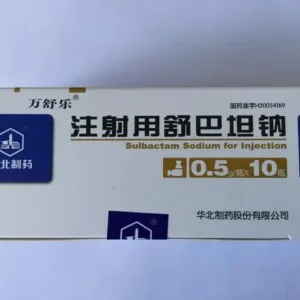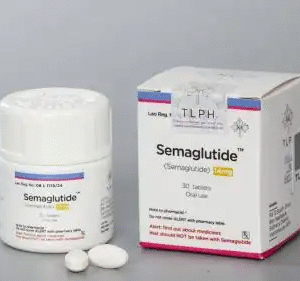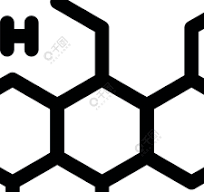Cefoperazone Sodium and Sulbactam Sodium for Injection
Functions and indications:
1. Suitable for the treatment of infections caused by sensitive bacteria. Typical indications include: sinusitis, otitis media, epiglottitis, bacterial pneumonia and other upper and lower respiratory tract infections; urinary tract infection, pyelonephritis; peritonitis, cholecystitis, endometritis, pelvic cellulitis and other intra-abdominal infections; bacterial bacteremia; skin, soft tissue, bone, joint infections; gonococcal infections. 2. During the perioperative period, this product can also be injected to reduce the incidence of wound infection in patients after abdominal and pelvic surgery, and wound infection can be secondary to peritoneal infection. During termination of pregnancy or cesarean section, ampicillin sodium sulbactam sodium for injection can be used as a preventive medication to reduce the risk of sepsis after surgery.
Dosage and administration:
The dosage and administration of this product may vary for different dosage forms and specifications. Please read the specific drug instructions for use, or follow the doctor’s advice. Ampicillin sodium sulbactam sodium for injection: 1. Ampicillin sodium sulbactam sodium for injection can be injected intramuscularly or intravenously. For details of the dilution solution, please refer to the instructions. 2. For intravenous injection, ampicillin sodium and sulbactam sodium for injection should be prepared with sterile water for injection or other compatible solutions. To ensure complete dissolution, wait until the foam disappears and the powder is no longer visible to the naked eye. This dose can be used for intravenous push injection, and the push injection time should exceed 3 minutes, or increase the volume of the diluent, and the intravenous drip administration time should exceed 15-30 minutes. 3. Ampicillin sodium and sulbactam sodium for injection administered parenterally can be used for deep muscle injection. If pain occurs at the injection site, the powder can be prepared with 0.5% anhydrous lidocaine hydrochloride sterile water for injection. 4. Adult use: The usual daily dose of ampicillin sodium and sulbactam sodium for injection is 1.5-12g, divided into equal amounts and injected once every 6 or 8 hours, and the maximum daily dose of sulbactam is 4g. When treating mild and moderate infections, it can be injected once every 12 hours. 5. Mild infection: The daily dose of ampicillin sodium and sulbactam sodium for injection is 1.5-3 (0.5+1 to 1+2)g. 6. Moderate infection: The maximum daily dose of ampicillin sodium and sulbactam sodium for injection is 6 (2 + 4) g. 7. Severe infection: The maximum daily dose of ampicillin sodium and sulbactam sodium for injection is 12 (4 + 8) g. 8. The number of administrations can be increased or decreased according to the severity of the patient’s infection and renal function. Treatment usually continues until 48 hours after the patient’s fever or other abnormal signs return to normal. In general, the treatment should be 5-14 days, but in severe cases, the course of treatment can be extended or ampicillin can be added. 9. When treating infections in patients with restricted sodium salt intake, it should be noted that 1500 mg of ampicillin sodium and sulbactam sodium for injection contains approximately 115 mg (5 mmol) of sodium salt. 10. When used to prevent surgical infections, 1.5-3 g of ampicillin sodium and sulbactam sodium for injection should be given to the patient during the anesthesia induction period to allow the drug to have enough time to reach effective serum and tissue concentrations during the operation. This dose can be repeated every 6-8 hours; it is usually discontinued 24 hours after major surgical procedures, unless ampicillin sodium sulbactam sodium for injection is used for treatment. 11. When treating uncomplicated gonorrhea, a single dose of 1.5g of ampicillin sodium sulbactam sodium for injection can be injected. To prolong the plasma concentration of sulbactam and ampicillin, 1.0g of probenecid should be taken orally at the same time. 12. Medication for patients with impaired renal function: In patients with severe renal impairment (creatinine clearance 30ml/min), the drug clearance kinetic parameters of sulbactam and ampicillin are similarly affected, so the plasma concentration ratio of the two remains constant. As with the conventional use of ampicillin, the number of doses should be reduced when treating such patients with sulbactam sodium/ampicillin sodium. Piperacillin sodium sulbactam sodium for injection: 1. Usage: intravenous drip. Before use, dissolve each bottle of this product in an appropriate amount of 5% glucose injection and 0.9% sodium chloride injection; then dilute it with the same solvent to 50-100 ml for intravenous drip, and the drip time is 30-60 minutes. 2. Dosage: 2.5g (1 tube) or 5g (2 tubes) (i.e. piperacillin 2g or 4g, sulbactam 0.5g or 1g) each time for adults, once every 12 hours. For severe or refractory infections, 2.5g (1 tube) or 5g (2 tubes) (i.e. piperacillin 2g or 4g, sulbactam 0.5g or 1g) each time, once every 8 hours. For patients with renal insufficiency, adjust the dose as appropriate. 3. Treatment course: 7-14 days, or adjust the treatment course according to the condition. Sulbactam Sodium for Injection: When this product is used with ampicillin at a dose ratio of 1:2: 1. General infection: The adult dose is 1-2g of sulbactam per day and 2-4g of ampicillin per day, divided into 2-3 intravenous drips or intramuscular injections. 2. Mild infection: 0.5g of sulbactam per day and 1g of ampicillin per day, divided into 2 intravenous drips or intramuscular injections. 3. Severe infection: The dose can be increased to 3-4g of sulbactam per day and 6-8g of ampicillin per day, divided into 3-4 intravenous drips.
Adverse reactions:
1. Abnormalities of the blood and lymphatic systems: hemolytic anemia, agranulocytosis, thrombocytopenic purpura. 2. Abnormalities of the immune system: anaphylactic shock, anaphylactic reactions. 3. Abnormalities of the nervous system: convulsions. 4. Abnormalities of the gastrointestinal tract: pseudomembranous colitis, enterocolitis, oral mucositis, and tongue discoloration. 5. Hepatobiliary abnormalities: cholestatic hepatitis, cholestasis, abnormal liver function, jaundice. 6. Skin and subcutaneous tissue abnormalities: Stevens-Johnson syndrome, toxic epidermal necrolysis, erythema multiforme, acute generalized exanthematous pustulosis, exfoliative dermatitis, angioedema, erythema, urticaria. 7. Kidney and urinary system abnormalities: tubulointerstitial nephritis. 8. Systemic diseases and administration site reactions: injection site reactions.
Contraindications:
It is contraindicated for patients who are allergic to penicillins, cephalosporins or beta-lactamase inhibitors or have a history of allergy to the above drugs.
Share:
Products
Our offers
Health Classification
Let us work together to protect precious health
































